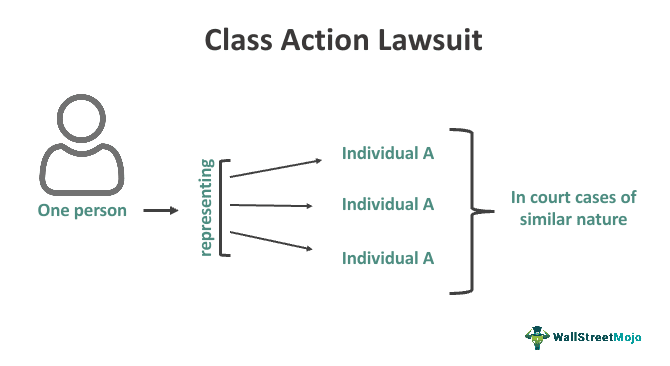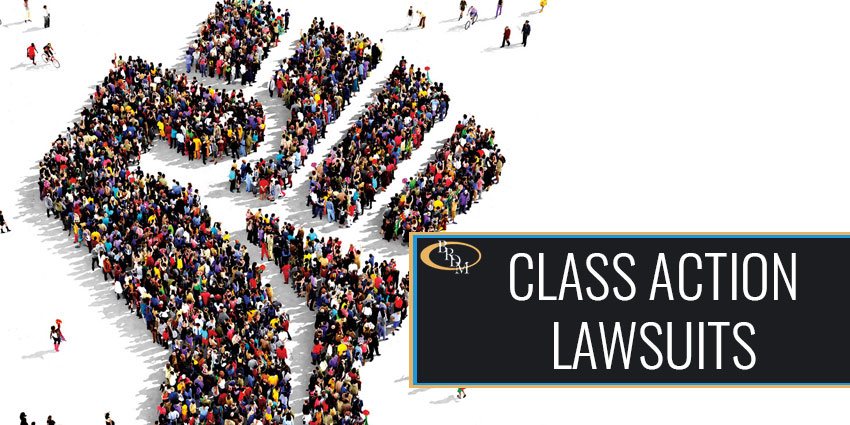Strength in Numbers: Checking Out the Influence of Class Action Lawsuits
Strength in Numbers: Checking Out the Influence of Class Action Lawsuits
Blog Article
Recognizing Course Activity Lawsuit: An Overview for Attorney
Course activity suits have come to be an essential component of the legal landscape, permitting for the consolidation of numerous claims into a single activity. For attorneys, understanding the ins and outs of class action litigation is crucial in properly representing their clients. This comprehensive overview checks out the principles of class activity legal actions, from identifying prospective class participants to browsing the qualification procedure. Furthermore, it explores vital approaches for taking care of class activity litigation and gives insights into negotiating and acquiring authorization for negotiations. By delving right into the details of course action legal actions, this overview equips attorneys with the knowledge and tools needed to efficiently navigate this complex location of regulation.
The Fundamentals of Class Action Lawsuits
Class activity claims are a lawful system utilized to settle similar claims from a team of individuals into a solitary suit, offering a efficient and affordable approach to looking for justice and resolution. This sort of lawsuit permits a depictive complainant, acting on part of the whole course, to bring an insurance claim versus a defendant who has supposedly triggered damage or went against the legal rights of multiple individuals.
The basic demands for bringing a course action lawsuit include numerosity, commonality, typicality, and competence of representation. Numerosity describes the truth that the course must be so big that joinder of all members would be impractical. Commonality means that there need to be common questions of legislation or fact that are shared by all participants of the class. Typicality needs that the claims of the representative complainant are typical of the insurance claims of the entire course. Competence of depiction makes sure that the representative plaintiff will properly represent the interests of the entire course.
Class activity suits can be helpful for both accuseds and plaintiffs. For defendants, it provides the chance to efficiently fix multiple insurance claims in a single lawsuit, avoiding the requirement to safeguard versus numerous specific lawsuits.
Identifying and Assessing Prospective Course Members
After establishing the fundamental demands for a course action claim, the following step is to recognize and assess possible course members. This process involves establishing who may become part of the course and reviewing their insurance claims to establish if they satisfy the needed requirements.
To determine possible course participants, lawyers typically carry out extensive study and collect relevant info. This might include assessing papers, performing meetings, and examining records to recognize individuals or entities that might have been influenced by the alleged wrongdoing. It is crucial to establish a clear and comprehensive checklist of prospective course members to make certain that all impacted celebrations are consisted of in the lawsuit.
As soon as prospective class members have actually been recognized, the next step is to examine their claims. This involves reviewing the benefits of each individual claim to identify if they fulfill the legal demands for class certification. Lawyers have to thoroughly analyze the truths, evidence, and lawful theories of each prospective class member's insurance claim to guarantee that they have a practical case.
Examining possible class participants additionally entails figuring out whether they meet the class interpretation and have endured comparable harm as an outcome of the offender's actions. This calls for comparing the truths and conditions of each possible course member's scenario to the claims and legal concepts presented in the claim.
Navigating the Class Qualification Process
To effectively browse the course qualification process, lawyers need to faithfully comply with the step-by-step needs stated by the court. Course certification is a critical action in a course action lawsuit, as it establishes whether a situation can continue as a class action, representing a team of individuals who have comparable cases against a defendant. The procedure includes pleasing details requirements, such as numerosity, commonness, typicality, and adequacy of representation.
First of all, attorneys must develop numerosity by showing that the course is so huge that private joinder is impractical. This can be achieved via evidence or professional statement. Secondly, they should develop commonness by showing that there prevail concerns of regulation or fact that predominate over private issues. This needs a detailed evaluation of the cases and defenses involved.
Following, attorneys have to show typicality, which implies that the representative complainant's insurance claims are common of the cases of the course participants. This ensures that the passions of the representative complainant straighten with the rate of interests of the class. Last but not least, attorneys need to demonstrate competence of representation, indicating that the representative plaintiff and their counsel will fairly and properly represent the interests of Class action lawsuit the course.
To navigate this procedure effectively, lawyers should extensively prepare by performing considerable research, collecting evidence, and developing a compelling argument that satisfies each of these requirements. They have to also be prepared to reply to any type of difficulties or objections increased by the offender. By carefully sticking to the step-by-step demands stated by the court, legal representatives can enhance their opportunities of obtaining class accreditation and advancing the passions of the class members.

Key Methods for Managing Course Action Lawsuits
Upon successfully browsing the class certification process, attorneys must after that carry out key methods for efficiently taking care of class action litigation. These techniques are vital to ensure that the case proceeds efficiently and efficiently, inevitably optimizing the opportunities of a favorable outcome for the class members.
One secret strategy is to develop a cohesive and strong legal group (Class action lawsuit). This involves setting up a team of lawyers with competence in course action lawsuits, in addition to other relevant locations such as the specific industry or subject matter entailed in the instance. A versatile group can bring various perspectives and abilities to the table, improving the general performance of the lawsuits
An additional essential technique is to create a comprehensive and well-thought-out litigation strategy. This strategy needs to outline the total goals of the instance, in addition to the particular legal theories and disagreements that will certainly be gone after. It ought to likewise consist of a timeline and budget to make sure that the instance stays on track and within the allotted sources.
Furthermore, lawyers should proactively engage with the class participants throughout the lawsuits process (Class action lawsuit). This includes offering routine updates on the development of the case, looking for input and comments from the class participants, and attending to any kind of worries or concerns they may have. By promoting open interaction and collaboration, lawyers can develop count on and assistance amongst the class participants, which can be critical in accomplishing a successful resolution
Working Out Course Activity Suits: Arrangement and Approval
When it comes to working out class action lawsuits, reliable arrangement and obtaining authorization are vital steps in achieving a resolution. Class action legal actions are complex and involve a big number of plaintiffs, making it critical to get to a negotiation that is adequate and fair to all events involved.

When a negotiation agreement is gotten to, it should be authorized by the court. The court's role in this process is to make sure that the negotiation is reasonable, reasonable, and appropriately shields the interests of the course members. The court will think about elements such as the nature of the insurance claims, the toughness of the evidence, the possible recovery for the course members, and any objections raised by class members.
Acquiring court approval is essential as it supplies finality to the negotiation and safeguards the interests of the class participants. It ensures that the settlement is binding and enforceable, and course members can obtain their rightful compensation.
Verdict

Class activity legal actions have ended up being an important component of the lawful landscape, enabling for the consolidation of multiple cases into a single activity. Course accreditation is a vital step in a class action legal action, as it identifies whether a situation can continue as a class action, representing a team of people who have comparable claims against an accused. By vigilantly adhering to the procedural needs established forth by the court, attorneys can increase their chances of obtaining course accreditation and advancing the interests of the course members.
The court will certainly think about aspects such as the nature of the claims, the toughness of the evidence, the possible healing for the course members, and any kind of arguments raised by course participants.
By identifying and assessing prospective class participants, attorneys can establish the practicality of a course activity suit.
Report this page